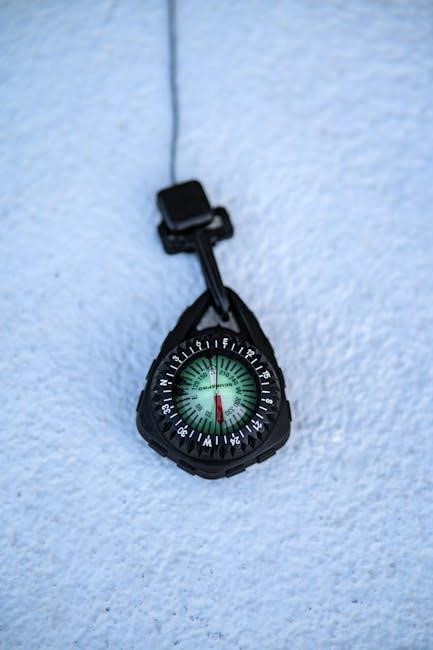The Rogue is a versatile class in Pathfinder, excelling in stealth, deception, and precise attacks. With abilities like Sneak Attack, they thrive in shadows and deal devastating blows. Versatile skill monkeys, Rogues are crucial in any party, offering both combat prowess and cunning solutions to challenges.
1.1 Overview of the Rogue Class in Pathfinder
The Rogue is a cornerstone class in Pathfinder, blending stealth, agility, and cunning. They excel at dealing precision damage from the shadows, making them formidable opponents in combat. With a focus on Dexterity and Intelligence, Rogues rely on skills like Stealth, Perception, and Sleight of Hand to outwit foes. Their versatility extends beyond combat, as they often serve as the party’s scout, trap disarmer, and problem solver. Weapon Finesse and Sneak Attack are hallmark abilities, allowing Rogues to thrive in both melee and ranged roles, making them indispensable in any adventuring group.
1.2 Key Features and Abilities of the Rogue
The Rogue excels through precision and stealth, with Sneak Attack as their signature ability, dealing bonus damage when attacking from hiding or flanking. Weapon Finesse allows them to use Dexterity for melee attacks, optimizing for agility over brute strength. Rogues also gain Evasion, improving survivability by dodging area effects. Their skill expertise ensures mastery in areas like Stealth, Perception, and Deception. Additionally, Trapfinding enables them to detect and disarm hazards, making them invaluable for navigating dangerous environments. These abilities combine to create a class that thrives in both combat and non-combat scenarios, offering versatility and lethality.
1.3 Importance of the Rogue in a Party
Rogues are indispensable in any party due to their versatility and unique skill set. Their expertise in Stealth, Perception, and Deception allows them to handle scenarios others cannot, such as scouting, disarming traps, and negotiating. Their Sneak Attack ability provides critical damage in combat, making them invaluable against tough enemies. Additionally, their ability to adapt to both combat and non-combat situations ensures they can solve problems creatively. Whether infiltrating, sabotaging, or dealing precise strikes, Rogues bring a dimension of strategy and lethality that complements any adventuring group, making them a cornerstone of effective party composition.

Rogue Archetypes
Rogue Archetypes offer customization through unique abilities, allowing players to tailor their characters to specific playstyles, enhancing combat, stealth, or cunning to suit party needs effectively.
2.1 Popular Rogue Archetypes
Popular Rogue Archetypes include the Thug, Rake, Scout, and Trickster. Each offers unique abilities, such as enhanced combat prowess or masterful illusions, allowing players to tailor their playstyle. The Thug excels in intimidation and raw strength, while the Rake emphasizes finesse and agility. The Scout combines ranged attacks with survival skills, making them versatile in exploration and combat. The Trickster, meanwhile, relies on stealth and deception, using illusions to outwit foes. These archetypes provide diverse options, ensuring the Rogue can adapt to any party dynamic or adventure scenario, making them a cornerstone of Pathfinder’s class customization.
2.2 Thug Archetype: Strength and Intimidation
The Thug Archetype transforms the Rogue into a fearsome enforcer, leveraging strength and intimidation to dominate encounters. By focusing on melee combat, the Thug gains abilities like terrifying assault, which combines Sneak Attack with fearsome tactics to unsettle enemies. This archetype trades traditional Rogue finesse for raw power, making it a formidable tank. With access to combat maneuvers and increased resilience, the Thug excels at controlling the battlefield and protecting allies. This archetype is ideal for players who prefer a more direct, aggressive approach, blending Rogue cunning with brute force to create an unstoppable presence in combat scenarios and beyond.
2.3 Rake Archetype: Finesse and Mobility
The Rake Archetype emphasizes finesse and agility, perfect for Rogues who excel in nimble, high-mobility playstyles. Rakes gain enhanced attack bonuses with light weapons, making them deadly with rapiers or daggers. Their ability to move freely in combat without provoking attacks allows for constant repositioning, maximizing Sneak Attack opportunities. This archetype is ideal for Dexterity-focused builds, blending precision with evasion. Rakes thrive in dynamic battles, using their agility to outmaneuver foes and strike from unexpected angles, making them a versatile and formidable choice for players who value speed and finesse over brute strength.
2.4 Scout Archetype: Ranged and Survival
The Scout Archetype is tailored for Rogues who prefer ranged combat and survival skills. Scouts excel at ranged attacks, gaining proficiency with bows and crossbows, and enjoy bonuses to ranged Sneak Attacks. Their abilities enhance survival and tracking, making them invaluable for navigating the wilderness. With improved initiative and terrain navigation, Scouts are versatile both in and out of combat. This archetype is perfect for players seeking a mix of ranged lethality and outdoor expertise, allowing them to dominate from a distance while supporting allies with their keen survival instincts and awareness.
2.5 Trickster Archetype: Stealth and Illusions
The Trickster Archetype transforms the Rogue into a master of stealth, deception, and illusions. This archetype trades traditional Rogue abilities for spell-like powers, allowing the Trickster to manipulate perceptions and confuse enemies. With access to illusion spells and abilities that create decoys or manipulate enemy actions, the Trickster excels at misdirection and control. Their abilities enable them to outwit foes, create opportunities for allies, and vanish into the shadows effortlessly. This archetype is perfect for players who enjoy blending stealth with magical trickery, offering a unique playstyle that emphasizes cunning and creativity over brute force.

Feats for Rogues
Feats are vital for Rogues, enhancing combat effectiveness and utility. From Weapon Finesse to Critical Hits, these abilities refine a Rogue’s deadly precision and versatility in combat and exploration.
3.1 Weapon Finesse: A Must-Have Feat
Weapon Finesse is a cornerstone feat for Rogues, enabling the use of Dexterity for attack rolls with light weapons. This is crucial for builds focusing on agility and precision, as it allows Rogues to bypass Strength requirements. With Weapon Finesse, Rogues can wield rapiers, daggers, and other finesse weapons effectively, ensuring accuracy and deadly strikes. It’s often considered a “feat tax” but is essential for maximizing the Rogue’s combat potential, especially in two-weapon fighting and agile builds. Without it, Rogues may struggle to maintain their signature finesse and mobility in combat scenarios.
3.2 Two-Weapon Fighting Feats
Two-Weapon Fighting (TWF) feats are essential for Rogues aiming to dual-wield weapons, enhancing damage output and combat versatility. The TWF feat tree—starting with Two-Weapon Fighting, followed by Improved and Greater Two-Weapon Fighting—reduces penalties for wielding two weapons, allowing for more accurate and deadly strikes. These feats are particularly valuable for builds focusing on agility and precision, as they enable Rogues to capitalize on their high Dexterity. When combined with Weapon Finesse, dual-wielding becomes even more effective, making TWF feats a cornerstone of agile, high-damage Rogue builds.
3.3 Critical Hits and Sneak Attack Feats
Critical hits and sneak attack feats amplify a Rogue’s lethality, combining precision with devastating outcomes. Feats like Critical Focus enhance critical hit chances, while Staggering Critical extends the duration of critical effects. Sneak attack feats, such as Deadly Precision, allow Rogues to apply sneak attack damage more frequently or under varied conditions. These feats synergize with critical hits, turning near-misses into crippling blows. By mastering these, Rogues become unparalleled in dealing burst damage, making them indispensable in combat scenarios where pinpoint strikes can turn the tide of battle in an instant.
3.4 Mobility and Combat Feats
Mobility and combat feats enhance a Rogue’s agility and battlefield versatility. Feats like Acrobatics and Spring Attack allow Rogues to move freely, avoiding attacks while setting up flanking opportunities. Mobility improves movement through hostile spaces, while Combat Reflexes enables multiple attacks of opportunity. These feats complement the Rogue’s sneaky nature, making them harder to hit and more dangerous in dynamic combat situations; By investing in mobility, Rogues can outmaneuver foes, ensuring they stay in advantageous positions to strike and evade effectively, making them invaluable assets in both offense and defense.
Rogue Builds
Rogue builds emphasize versatility, blending stealth, combat, and cunning. Whether focusing on ranged attacks, finesse, deception, or lethal precision, each build leverages unique abilities and playstyles effectively.
4.1 The Scout Build: Ranged and Agile
The Scout build emphasizes ranged combat and agility, making it ideal for players who prefer to attack from a distance. With a focus on Dexterity, this build excels at precision and mobility. Key features include high accuracy, increased movement, and enhanced survival skills. Scouts rely on bows or thrown weapons, utilizing feats like Point-Blank Shot and Deadly Aim for maximum effectiveness. Their ability to avoid melee combat while dealing consistent damage makes them invaluable to any party. This build thrives in open environments, where their ranged prowess and agility shine, allowing them to outmaneuver foes effortlessly and remain a deadly threat from afar.
4.2 The Rake Build: Finesse and Precision
The Rake build is designed for Rogues who excel in finesse and precision, leveraging agility and grace in combat. This build focuses on high Dexterity and Weapon Finesse, allowing for deadly accuracy with light weapons. Rakes are known for their mobility, using feats like Dodge and Mobility to evade attacks and strike from unexpected angles. They excel in agile combat, avoiding direct confrontations while dealing consistent, precise damage. This build is ideal for players who enjoy a more elegant, tactical approach to combat, combining style with lethality. The Rake’s emphasis on finesse makes them a versatile and formidable opponent in any situation. Their ability to complement any party with their unique skills ensures they remain a valuable asset, always striking with precision and flair.
With their emphasis on agility and finesse, Rakes are perfect for those who prefer a more refined and strategic playstyle, making them a standout choice for players seeking both challenge and elegance in their gameplay.
4.3 The Thief Build: Stealth and Deception
The Thief build emphasizes stealth, deception, and cunning, making it ideal for Rogues who prefer to operate in the shadows. Focused on high Dexterity and skills like Stealth, Sleight of Hand, and Deception, this build excels at avoiding detection and manipulating situations. Thieves rely on light weapons and agility, often using feats like Weapon Finesse to enhance their precision. They thrive in roles requiring espionage, sabotage, or reconnaissance. With their mastery of disguise and diversion, Thieves can outwit foes without direct confrontation, making them invaluable for missions requiring subtlety and cleverness. Their ability to blend into environments ensures they remain undetected, striking when least expected.
By prioritizing stealth and deception, the Thief build offers a playstyle centered around strategy and misdirection, perfect for players who enjoy outsmarting enemies rather than confronting them head-on.
4.4 The Assassin Build: Deadly and Precise
The Assassin build is designed for Rogues who specialize in dealing lethal, precise attacks from the shadows. Focused on maximizing Sneak Attack damage, this build thrives in scenarios where stealth and timing are crucial. Assassins often prioritize high Dexterity and precision, using weapons like daggers or shortbows for deadly accuracy. Feats like Weapon Finesse and Critical Focus enhance their ability to deliver critical hits. The Assassin excels at eliminating high-priority targets quickly, making them invaluable in campaigns requiring strategic, high-stakes missions. Their deadly efficiency makes them a formidable choice for players who enjoy playing a cunning, lethal operative.
This build is perfect for those who relish the role of a silent, deadly enforcer.

Sneak Attack
Sneak Attack is the Rogue’s signature ability, dealing extra damage when attacking from stealth or with advantage. It requires precise positioning and timing to execute effectively.
5.1 Understanding Sneak Attack Mechanics
Sneak Attack is a core damage-dealing ability for Rogues, activated when attacking from stealth or having an ally flanking the target. It triggers once per attack, adding bonus damage dice that increase with level. The ability requires precise positioning and setup, often relying on stealth, invisibility, or advantageous terrain. It’s crucial to understand the conditions, as it only works against flat-footed or unaware enemies. Proper use of Sneak Attack enhances a Rogue’s effectiveness, making it a key strategic element in both combat and exploration scenarios. Mastery of its mechanics is essential for optimizing damage output and contributing to party success.
5.2 Optimizing Sneak Attack Damage
Optimizing Sneak Attack damage involves maximizing the number of attacks and ensuring each hit counts. Focus on flanking enemies or attacking from stealth to trigger Sneak Attack consistently. Use weapons with high critical hit chances, like rapiers or longbows, to amplify damage. Feats such as Weapon Finesse enhance accuracy, increasing the likelihood of landing Sneak Attacks. Prioritize Dexterity and Wisdom to improve attack rolls and initiative, ensuring you strike first. Positioning yourself to attack from unexpected angles also increases the frequency of Sneak Attack opportunities. Combining these strategies ensures your Rogue becomes a deadly, efficient damage dealer in any scenario.
5.3 Avoiding Common Sneak Attack Mistakes
Avoiding Sneak Attack mistakes is crucial for maximizing your Rogue’s effectiveness. Common errors include failing to maintain flanking positions, neglecting stealth checks, and ignoring enemy awareness. Ensure you always have a clear path to attack from the side or rear, as front-facing strikes rarely trigger Sneak Attack. Avoid overrelying on a single weapon or tactic, as adaptability is key. Additionally, always confirm that your target is flat-footed or denied their Dexterity bonus before striking. Proper positioning and awareness of enemy abilities can prevent wasted opportunities, ensuring your Sneak Attacks consistently deliver their full potential in combat scenarios.

Rogue Equipment
Rogue equipment selection is vital, focusing on weapons that maximize Sneak Attack potential, light armor for mobility, and tools like Thieves’ Tools for versatility.
6.1 Choosing the Right Weapons
Weapon choice is crucial for Rogues, as it directly impacts their combat effectiveness. Weapon Finesse is a must-have feat for most builds, enabling attacks with Dexterity. Melee weapons like the rapier or dagger are ideal for finesse builds, while ranged options such as the shortbow or hand crossbow offer flexibility. Dual-wielding weapons like daggers or swords enhances damage output, especially with Two-Weapon Fighting feats. For Scouts, ranged weapons are often preferred, while Tricksters may opt for weapons that complement their illusion abilities. Versatility in weapon selection ensures Rogues can adapt to various combat scenarios and playstyles.
6.2 Armor Selection for Rogues
Rogues rely on agility and stealth, so their armor choices must balance protection with mobility. Light armor is ideal, as it avoids hindering Dexterity bonuses. Mithral armor is a popular choice, offering reduced weight and lower penalties. Rogues aren’t proficient with heavy armor, making light or leather armor the best options. Armor with low ACP ensures they maintain their stealth and attack bonuses. For archetypes like the Scout or Trickster, mobility-focused armor is crucial. Selecting the right armor ensures Rogues remain agile and deadly, blending protection with their signature finesse and deception.
6.3 Tools and Gadgets for Rogues
Rogues thrive on versatility, and their tools and gadgets are essential to their craft. Thieves’ tools are a staple, enabling expertise in lockpicking and trap disarming. A burglar’s pack, complete with a crowbar, dark common clothes, and a belt pouch, is ideal for sneaking and deception. Alchemical items like smoke bombs and caltrops can turn the tide in combat. For cunning rogues, poison and antidote kits are invaluable, allowing for subtle takedowns. These tools enhance their agility and stealth, making them indispensable in both combat and exploration. Each gadget complements their skills, ensuring they remain one step ahead in any scenario.

Combat Tactics
Rogues excel in positioning and using the environment to their advantage. They set up sneak attacks, control battlefield flow, and manipulate combat dynamics with precision and stealth.
7.1 Stealth and Ambush Tactics
Stealth is the Rogue’s backbone, enabling them to set up devastating ambushes. By mastering skills like Stealth and Perception, Rogues position themselves for optimal sneak attacks. They use shadows, terrain, and distractions to remain undetected, striking when enemies are most vulnerable. Ambush tactics involve initiating combat from surprise, dealing maximum damage with Sneak Attack. Rogues also excel at repositioning during fights, maintaining stealth to set up future ambushes. This combination of mobility and deception makes them unparalleled at controlling combat flow and exploiting enemy weaknesses, ensuring they remain a deadly and unpredictable force on the battlefield.
7.2 Positioning and Movement in Combat
Positioning is crucial for Rogues, as it maximizes their damage and survivability. They excel at repositioning quickly using mobility feats, ensuring they remain in advantageous spots. Rogues avoid tight clusters to prevent being surrounded, using the battlefield’s edges to maintain escape routes. By staying mobile, they can exploit enemy weaknesses and set up flanking opportunities for Sneak Attack. Agile maneuvers allow them to dart between foes, controlling the combat flow. Effective positioning also helps avoid direct threats, making Rogues elusive and harder to target. Their mastery of movement ensures they remain a constant, unpredictable threat on the battlefield.
7.3 Utilizing Sneak Attack in Different Scenarios
Sneak Attack is the Rogue’s signature ability, capable of dealing massive damage from the shadows. In ambushes, Rogues strike first, catching enemies off guard for maximum impact. Against isolated foes, flanking or using allies to create openings ensures Sneak Attack procs. Ranged attacks are effective for picking off enemies without engaging directly. Rogues excel at finishing weakened enemies with a precision strike. In complex battles, timing Sneak Attack to disrupt spellcasters or high-value targets maximizes utility. Always position to maintain stealth or have an ally provide the needed distraction for optimal results.

Character Creation Basics
Creating a Rogue involves prioritizing Dexterity and Wisdom for stealth and perception. Choose races like Half-Elf or Halfling for bonuses. Select skills like Stealth, Sleight of Hand, and Perception to optimize your Rogue’s effectiveness in both combat and exploration.
8.1 Ability Score Prioritization
- Dexterity is the Rogue’s most critical ability, enhancing AC, attack rolls, and reflex saves.
- Wisdom is next, as it improves Perception, crucial for detecting traps and enemies.
- Constitution increases survivability by boosting hit points.
- Strength is less important unless focusing on a Strength-based build.
- Charisma can aid in social skills like Bluff and Diplomacy.
- Intelligence and Wisdom are secondary unless focusing on skill-heavy builds.
8.2 Race Selection for Rogues
Choosing the right race for your Rogue can significantly enhance their abilities. Humans are versatile, offering a bonus feat and skill rank. Half-Elves excel in social skills and Charisma. Halflings gain bonuses to Dexterity and stealth, making them natural Rogues. Gnomes benefit from Intelligence boosts and trickster-like abilities. Half-Orcs are ideal for Strength-based builds, leveraging intimidating presence. Catfolk offer Dexterity and Perception bonuses, perfect for scouts. Each race provides unique advantages, so select one that aligns with your Rogue’s playstyle and campaign needs.
8.3 Skill Selection and Optimization
Optimizing your Rogue’s skills is crucial for maximizing their effectiveness. Focus on key skills like Stealth, Sleight of Hand, Perception, and Disable Device, which are essential for sneaking, manipulating objects, and avoiding traps. Allocate higher ranks to these skills to ensure proficiency. Consider your Rogue’s archetype and playstyle when selecting skills, as some builds may benefit more from Acrobatics or Bluff. Use your race’s bonus skills and class features to complement your choices. Prioritize skills that enhance your Rogue’s versatility in both combat and exploration scenarios, ensuring they remain a valuable asset to the party.

Advanced Rogue Techniques
Mastery of crafting, trapmaking, and poison use elevates a Rogue’s lethality. These advanced methods enhance stealth, deception, and combat efficiency, making them a formidable opponent in any scenario.
9.1 Crafting and Trapmaking
Crafting and trapmaking are advanced techniques that enhance a Rogue’s versatility. Crafting allows for the creation of custom gear, such as weapons or tools, tailored to their playstyle. Trapmaking enables Rogues to set deadly ambushes or protect their allies by creating intricate mechanisms. These skills not only add depth to a Rogue’s utility but also provide strategic advantages in both combat and exploration. Mastery of these techniques transforms a Rogue into a master of preparation and deception, making them indispensable to any party. These abilities highlight the Rogue’s cunning and resourcefulness, setting them apart as a class of unparalleled adaptability.
9.2 Using Poisons Effectively
Mastering the use of poisons is a hallmark of a skilled Rogue, offering subtle yet deadly advantages in combat. Poisons can incapacitate enemies, weaken their defenses, or even instill fear, providing tactical flexibility. Rogues can apply poisons to weapons or use them in clever traps, catching foes off guard. However, using poisons requires careful planning, as their effects can vary and misuse may harm allies. When wielded effectively, poisons become a powerful tool, showcasing the Rogue’s cunning and lethal precision, making them a formidable opponent in both stealth and direct confrontations. This expertise underscores the Rogue’s reputation as a master of covert operations.
9.3 Mastering Stealth and Deception
Stealth and deception are cornerstone abilities for Rogues, enabling them to outwit foes and strike from the shadows. By maximizing skills like Stealth, Deception, and Bluff, Rogues can move undetected, disguise themselves, or create false impressions. Investing in high Dexterity and Wisdom enhances these skills, while feats like Stealthy and Deceptive further refine their effectiveness. Using these abilities creatively allows Rogues to manipulate encounters, avoid danger, or set up ambushes. Mastery of stealth and deception transforms the Rogue into an unpredictable and elusive opponent, capable of achieving victory through cunning rather than brute force, making them indispensable to any party.

GM Considerations for Rogues
GMs should balance encounters to challenge Rogues’ strengths, such as stealth and sneak attacks. Designing clever traps and puzzles plays to their skill expertise, while ensuring encounters remain fair and engaging for the entire party. Utilizing Rogue-specific content and adapting scenarios to their unique abilities keeps the class dynamic and fun without overshadowing other party members.
10.1 Balancing Rogue Encounters
When designing encounters for Rogues, GMs must balance their unique strengths, such as Sneak Attack and stealth, to ensure challenges are engaging but fair. Incorporate environments that play to their agility and cunning, while including foes with abilities that counter their sneak attacks. Avoid overloading encounters with enemies immune to critical hits, as this diminishes the Rogue’s effectiveness. Ensure that traps and puzzles align with their skill expertise, providing opportunities for them to shine. Maintain party balance by designing scenarios that allow the Rogue to excel without overshadowing other classes, keeping the game dynamic and enjoyable for everyone.
10.2 Creating Challenging Traps and Puzzles
Designing traps and puzzles for Rogues requires balancing challenge and fairness, ensuring they test the class’s strengths without feeling overwhelming. Focus on leveraging the Rogue’s key skills like Perception, Disable Device, and problem-solving abilities. Incorporate variety, such as mechanical traps, magical wards, and environmental hazards, to keep encounters dynamic. Avoid repetitive or overly punitive mechanisms that frustrate players. Integrate narrative context to make traps and puzzles feel meaningful to the story. Ensure rewards align with the effort required to overcome these challenges, reinforcing the Rogue’s role as a master of ingenuity and precision.
10.3 Utilizing Rogue-Specific Content
Integrating Rogue-specific content enhances gameplay by tailoring encounters to their unique abilities. Use archetypes like the Trickster or Scout to create scenarios that highlight their strengths. Incorporate feats such as Weapon Finesse or Sneak Attack into enemy tactics to challenge Rogues effectively. Design puzzles and traps that require skills like Perception, Disable Device, or Stealth to solve. Include Rogue-favored equipment, such as daggers or shortbows, in treasure hoards to reward their playstyle. By aligning content with Rogue mechanics, GMs create engaging and balanced encounters that showcase the class’s versatility and depth.

Resources and Further Reading
Explore official Pathfinder resources like the Pathfinder SRD for core rules. Visit forums and guides for optimized builds, archetypes, and strategies. Community tools and spreadsheets offer deeper customization.
11.1 Recommended Guides and Forums
For mastering the Rogue class, explore guides like the Pathfinder SRD and community forums such as Reddit’s r/Pathfinder_RPG. These resources offer detailed build advice, archetype recommendations, and strategies for optimizing Sneak Attack. Websites like The Angry GM provide humorous yet insightful tips, while platforms like HyperRogue offer unique perspectives on stealth and combat tactics. Joining these communities can help you stay updated on the latest Rogue builds and techniques, ensuring your character remains effective and fun to play in any campaign setting.
11.2 Official Pathfinder Resources
Paizo’s official Pathfinder SRD provides comprehensive rules and class details, essential for any Rogue build. The Pathfinder Core Rulebook and Advanced Player’s Guide are must-haves, detailing class features and archetypes. Paizo’s website also offers Adventure Paths like Carrion Crown, featuring Rogue-centric scenarios. For newer players, the Pathfinder 2e materials include streamlined Rogue mechanics. These resources ensure accuracy and inspiration, helping players and GMs alike to optimize Rogue characters and integrate them seamlessly into any campaign.
11.3 Community-Created Tools and Spreadsheets
Community-created tools and spreadsheets are invaluable for optimizing Rogue builds. Popular platforms like Google Sheets host detailed character builders and calculators, helping players maximize Sneak Attack damage and skill efficiency. Forums and Reddit threads often share meticulously crafted spreadsheets for feat selection and ability score optimization. Additionally, fan-made guides and resources, such as those found on Pathfinder forums, provide innovative strategies and builds. These tools, crafted by experienced players, offer insights and shortcuts for both new and veteran Rogues, enhancing gameplay and character development.




